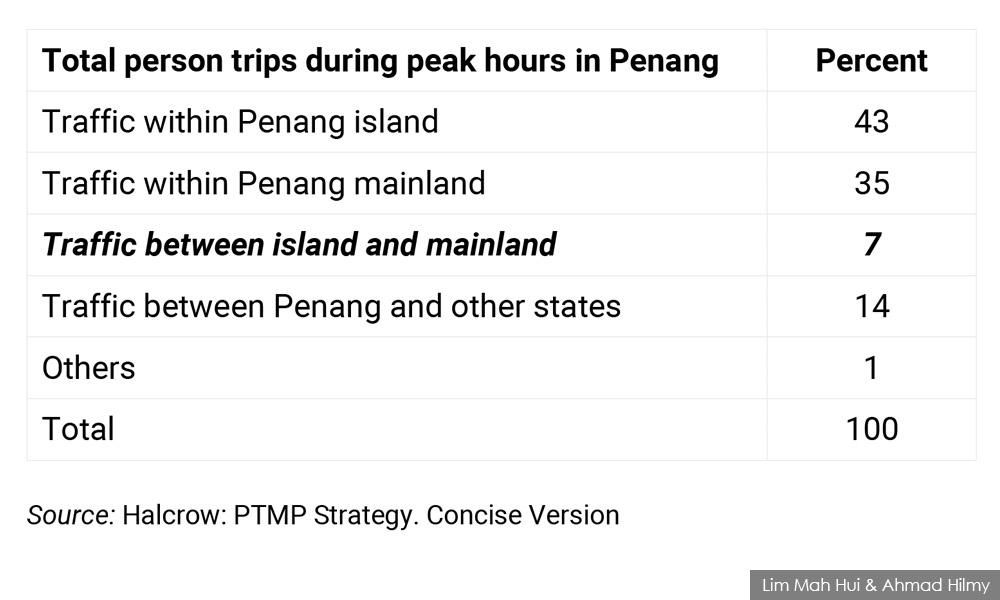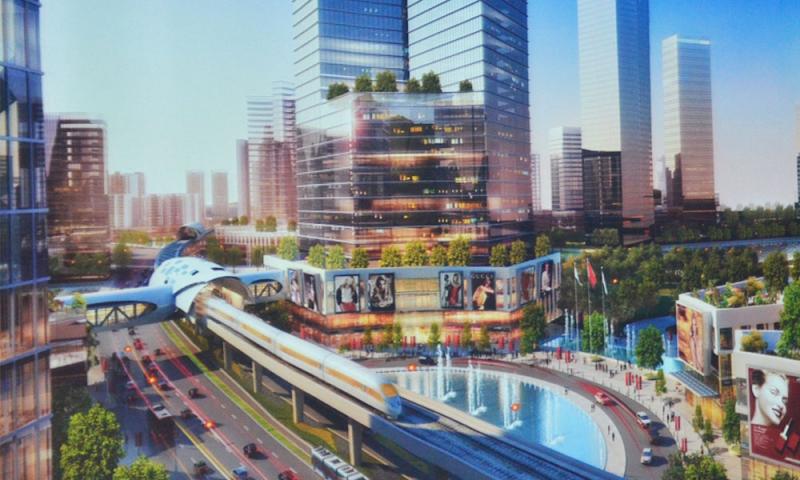A better, cheaper alternative to the RM46 billion PTMP
COMMENT | The Penang Transport Master Plan (PTMP) at RM46 billion and counting is an overblown project that does not solve the state's transport woes, is financially ruinous, and environmentally destructive.
An alternative fully-integrated public transport system based on the modification of the Halcrow Plan can be implemented at less than RM10 billion.
The sources of funding can come from cancellation of the Zenith package (RM6 billion), sale of the Sungai Nibong state-owned land (RM1 billion) and federal funding (RM2 billion). There would hence be no justification for the Penang South Reclamation (PSR) project.
Now is a good time for the Penang government and the public to revisit and review the PTMP for four reasons.
First, SRS Consortium, the project proponent, is having difficulty fulfilling the first and foremost condition of the agreement, i.e., to provide a bridge loan to kickstart the project.
The SRS Consortium proposal states that the PTMP project "does not require the state (or the federal government) to raise or guarantee any loans to finance the delivery of the PTMP."
All funds will come from reclamation of the three islands. SRS will provide an initial bridging loan of RM1.3 billion, which will be paid by the state including the interest. Since this condition is not fulfilled, does the agreement still hold?
Second, instead of reviewing the scale of the project, the state government is reaching out to multiple sources to fund the PTMP.
It has asked Putrajaya for an initial RM2 billion, and in the latest round, for RM10 billion. It has even approached a Japanese government agency for funding.
Third, certain projects are no longer relevant due to the change of government at the federal level.
In particular, the cross-channel tunnel was proposed because it was argued that the BN government would not approve a third bridge. This is no longer relevant. Conversely, improvement of the ferry link that was under BN’s control should now be resuscitated.
Finally, one should not 'over-plan' with rapid changes in technology. The Autonomous Rail Transit (ART), or the trackless tram, did not exist when the PTMP was conceived.
This technology was invented and introduced in China two years ago. Hailed as a transformative technology, it can do what trams and LRTs do but better, cheaper and faster.
Qatar will be the first country outside China to adopt it in time for the 2022 World Cup.
In this three-part series, we will ask the following questions: Does Penang need to spend RM46 billion for the PTMP? Will it solve Penang’s transport woes? Are there better, cheaper and faster alternatives?
The table below summarises the major components of the RM46 billion PTMP project.

Note that the RM45 billion figure does not include the monorail line from Butterworth to Bukit Mertajam shown on the SRS Consortium map.
The cost estimates of Pan Island Link 1 (PIL1) and LRT as reported in recent press articles keep escalating. The PDP fees and reimbursements make up 10 percent of the total RM45 billion.
Phase 1 under the SRS Consortium proposal will take eight years to complete. It is made up of essentially two gargantuan infrastructure projects – PIL1 and the LRT.
The other road projects come under the Zenith Consortium package in the Halcrow Plan. This consists of one cross-channel tunnel and three major highways (the North Coast Paired Road, the highway from Ayer Itam to LCE Expressway, and the Gurney Road to LCE Expressway).
We argue that all these projects can either be cancelled or replaced with better, cheaper and faster alternatives.
Cancel PIL1 to save RM9b
There is indisputable scientific evidence that simply building more roads does not solve traffic congestion. It may alleviate congestion for a short period, but will eventually encourage more traffic leading us back to square one.
The SRS Consortium consultants who prepared the detailed environmental impact assessment (DEIA) for PIL1 admitted this fact.
In Chapter 8 of the report, it says that by 2030, “During the AM peak hour, PIL1 is expected capture between 5,700 PCUs/hr to 7,800 PCUs/hr, which represents a capture rate of between 19 percent and 23 percent.
"In the PM peak PIL1 is expected to capture between 7,500 PCUs/hr to 8,000 PCUs/hr representing between 18 percent to 29 percent capture rates.”
In plain English, PIL1 will experience traffic congestion six years after it is completed.
So, we take seven years to build the highway, causing major disruptions and misery, and 'enjoy' fast travel for 6 years. Then we are back to square one.
Penang Chief Minister Chow Kon Yeow and DAP veteran Lim Kit Siang recognised this fact.
In 2002, both were dead-set against the Penang Outer Ring Road (Porr) which is the precursor of today’s PIL1.
Porr’s road alignment is the same, except PIL1 is longer and extends further south, while Porr veers east to LCE Expressway, and this route is traced by the upcoming Zenith Package 2 highway.
As Chow said at a DAP function in 2002: “If the findings of the Halcrow Report are true, (former Penang chief minister) Koh Tsu Koon would be irresponsible in pushing the Porr through as this will not be a long-term solution to the traffic congestion on the island.”
Lim said in the same year: “The nightmare of the Penang traffic congestion is likely to be back to square one, not in eight years but probably less than five years, after the completion of Porr..."
"What Penang needs is an efficient public transport system based on sustainable transport policy, as Porr is not a medium-term let alone long-term solution to the traffic congestion nightmare on the island.”
Conclusion: PIL1 does not solve Penang’s traffic woes, and is financially and environmentally disastrous.
Cost savings: RM9 billion.
Cancel Cross-Channel Tunnel to save RM3.5b
In the first place, building a cross-channel tunnel is not a priority.
The table below shows the traffic volume in Penang during morning and evening peak hours.
Of the 250,000 person trips made during peak hours, only seven percent are cross channel traffic. Traffic within Penang Island is the highest at 43 percent and within the mainland at 35 percent.
It is clear that the authors of Halcrow Report do not consider building the cross-channel tunnel a priority in addressing Penang’s transportation problems.
Nevertheless, they included it in their report for reasons that were not made public, leading to concerns raised by the public as to whether they were under pressure to do so.

The first Penang Bridge has 3 lanes in each direction. A simple solution that costs next to nothing is to create an additional counter-flow lane in the direction of the island during morning peak hours, i.e., having four lanes into the island and two lanes into mainland.
This counter-flow lane should be a bus and high-occupancy vehicle (HOV) lane. The reverse happens during evening peak hours.
This concept of bus-HOV lane can be used effectively to solve Penang’s cross-channel traffic jam.
Enforcement is simple, with the installation of dashcams at the back of each bus. Stiff and deterrent fines like RM1,000 should keep offenders away.
Conclusion: Cancel the cross-channel tunnel and introduce a counter-flow lane for buses and HOVs during peak hours.
Costs savings: RM 3.5 billion.
PART 2
Is LRT the best public transportation option for Penang?
PART 3
Cutting the cost of the PTMP down to RM10 billion
LIM MAH HUI is a former professor, international banker and Penang Island City Council for six years. AHMAD HILMY is a transport engineer who teaches at Universiti Sains Malaysia.
The views expressed here are those of the author/contributor and do not necessarily represent the views of Malaysiakini.
RM12.50 / month
- Unlimited access to award-winning journalism
- Comment and share your opinions on all our articles
- Gift interesting stories to your friends
- Tax deductable


